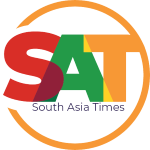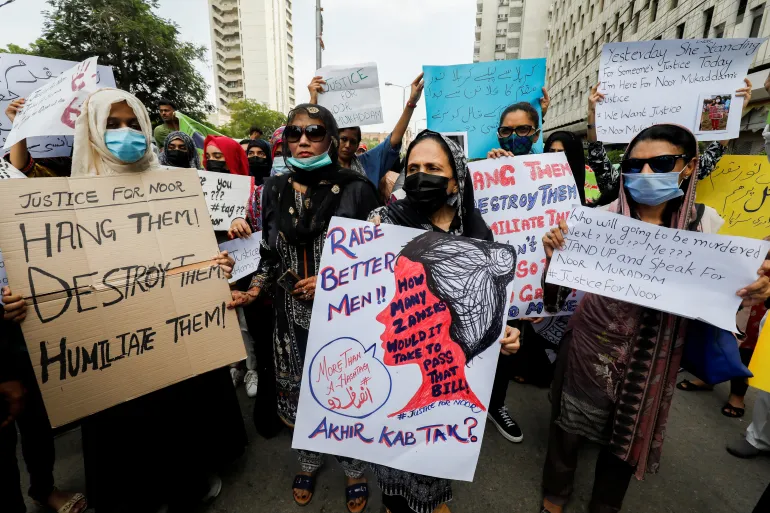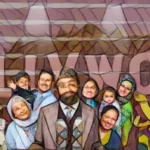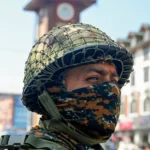Every year, March 8th –International Women’s Day, reminds us that we have not yet reached the destiny of a gender-equal world. Millions of women all over the world struggle for the cause and this annual celebration not just commemorate the achievements so far, but also helps build resolve for what is yet to be achieved. Politics and polities recognized women as late as the 20th century when women gradually managed to win the right to vote.
Women won full suffrage in India in 1949 and in Pakistan, they gained voting rights in national elections in 1956. The struggle to win suffrage may be termed as the starting point of most women’s rights movements, as celebrated in Women’s Day. But each movement is unique based on the social, historical, and geopolitical realities of its birthplace. Experiences of women in European society differ from what women experience every day in a country in Africa.
To speak of Pakistan, South Asian Sub-continent’s legacy, anti-colonial struggle, independence, and nation-building, all contribute to how the society and culture have taken form. Pakistan’s social fabric is both enabling and disabling for women to live their lives to their best potential, hence a spectrum of challenges and opportunities. Some will argue that challenges outweigh opportunities, and this article will not try to prove them wrong.
But the most important part is to always embed and ground any discussion on women’s rights in Pakistan in local contexts and realities. With a 49.2% female population, Pakistan has an almost parity in terms of male to female population ratio. The 49.2% women population spreads across rural and urban areas. Lifestyles, occupation, and employment widely differ in rural and urban centers. The issues faced by rural and urban women are, therefore, not exactly the same. But, there are common denominators owing to the same culture, same society.
Challenges for Women in Pakistan
Gender-Based Violence
Speak of the challenges and issues faced by women and girls in Pakistan and gender-based violence will appear in the top-most. Reports and news of heart-shaking incidents of femicide, girl child sexual abuse, and domestic violence reach us regularly, not to forget the large number of unreported cases and occurrences. From January to July last year, 3721 cases of violence against women were reported from Punjab, the most populated province of Pakistan, alone.
Spousal violence still remains an issue with 28% of women having experienced intimate partner violence in the year 2017-18. Control and dominance maintained by spouses is the most visible form of exploitation Pakistani women experience in the domestic sphere. But this is not the only form of home-based exploitation. Honor killing is yet another heinous crime committed against women. 107 incidents of honor killings happened last year in the province of Punjab.
These are not just numbers; the actual lives of actual women are under attack. The psychological impact of having experienced violence based on gender transcends an individual woman and all women of the society feel its tremors. Feeling unsafe not just in the public sphere but also in domestic spheres is a gross violation of basic human rights. To speak of the public sphere, street harassment, workplace harassment, and on-campus harassment are also the issues faced by women in Pakistan.
The extent of harassment experienced by women is reflected in the fact that they are often driven to make choices that they would not make otherwise. Most of the data that has been compiled looks on incidents of violence, rape, and sexual abuse but regular occurrences of harassment are often overlooked.
Girls’ Education
Expanding on other issues and challenges that women in Pakistan face, girls’ education still calls for attention. Though enrolment of girls in primary, secondary, and high school education has increased considerably, higher education is still a luxury available to few girls. Often, parental concerns to get their daughters married stand as a hurdle in their way of achieving higher education and pursuing careers and professional life.
In rural areas, poverty often forces parents to decide the early marriages of their daughters. 21% of girls marry before the age of 18, according to the President of All Pakistan Private Schools Federation. In addition to this, there are several socio-cultural aspects of marriage that make it a contract in which women suffer the most. Often, parents tie the knot irrespective of whether the bride and the groom are an equal match for each other.
Talking specifically of Pakistan’s rural areas and agricultural lands, free labor rendered by women at the time of harvest is a serious challenge. It is a classic case of labor exploitation. Women’s contribution in the cultivation and harvesting of crops even exceeds that of men but there is no recognition, no compensation, and no policies to regulate this labor.
The labor rural women in Pakistan undertake on farms is in addition to the house chores and looking after kids. Brick Kilns are another similar case of the added burden of labor on women. There is a complete void of policy regarding this agriculture sector that involves 72.7% of the total female workforce.
Objectification and Misrepresentation
Pakistani women also experience massive objectification in the entertainment and media industry. Advertisements have nearly replicated the Western way, rewarding excessive glam. Misleading images of women empowerment are created and floated across the traditional and non-traditional mediums, just to serve the purposes of corporatism. This misrepresentation comes at the cost of neglect of some dire issues that need attending to ensure that women are actually and really empowered, represented, and included.
The patriarchal overtones of the Pakistani culture and society also become apparent in the women-centric abusive language in folklore and on the streets. These practices of placing honor in the name of women and disregarding someone’s honor by provoking them in the name of women are perhaps the most apparent and evident proof of the patriarchy and misogyny that prevails in Pakistan.
Opportunities for Women in Pakistan
The opportunities may not be as extensive as the challenges are, but they are a rare ray of sunshine. As widespread as harassment is, the amendment in the ‘Protection against Harassment of Women at the Workplace’ bill enacted on January 14th this year expands the definition of “workplace” to include all formal and informal workplaces. This amendment extends support and legal rights to women working in not-so-formal settings. This amendment can be termed as a step in the right direction, and towards the bigger goal of women empowerment.
With the boom in e-commerce and entrepreneurship, Pakistani women have actively made themselves part of this booming industry. Though only 1% of the total entrepreneurs in Pakistan are women, many initiatives and training programs functioning locally aim to equip women entrepreneurs with the required resources and expertise.
The recent inaugural of an exclusive ‘Ladies Bazaar’ in the capital city is evidence of such opportunities. The overall openness of the corporate sector towards the female workforce is also a very affirmative change in the job market. This leads to an inclusive workforce and also helps design SOPs that benefit women.
Seeing Pakistan’s women’s cricket team actively making its mark also leads us to believe that there are avenues of opportunities for women in Pakistan. A women PSL is also being planned in Pakistan and has received much appreciation and welcome since its announcement. Heart-warming images and clips are also reaching us from Australia where Pakistan’s women’s cricket team is taking part in the ICC Women World Cup 2022. Bismah Maroof’s little daughter accompanying her to her match and attracting attention from the Indian women team is proof that women can excel as diplomats, peacemakers, and just about anything they want to be.
Your go-to editorial hub for policy perspectives and informed analysis on pressing regional and global issues.





Add a Comment